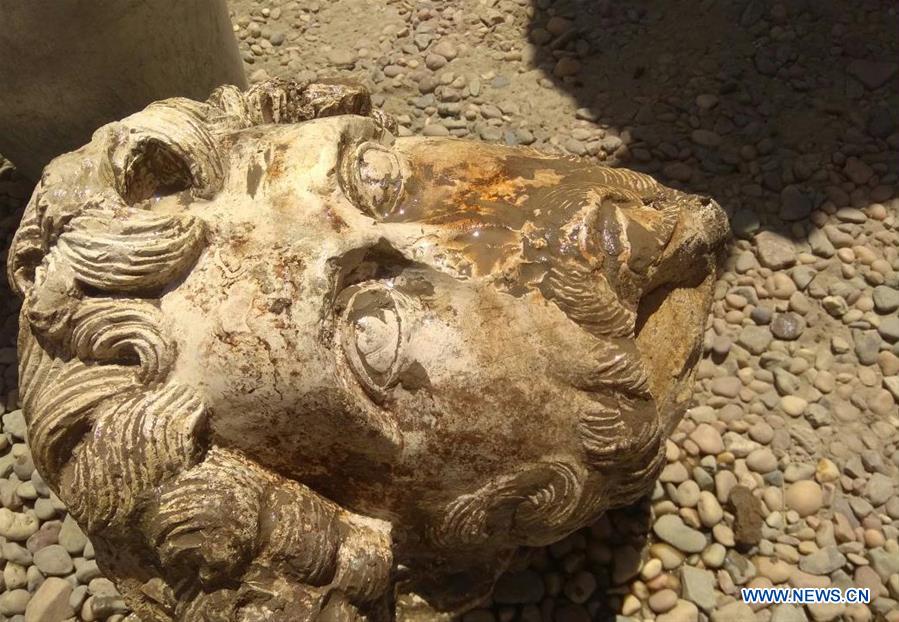
This photo provided by the Egyptian Ministry of Antiquities and taken on April 8, 2018 shows the head of a statue of Roman Emperor Marcus Aurelius in Aswan, Egypt. Egyptian archaeologists have made two rare discoveries of a shrine of ancient god Osiris-Ptah-Neb in Luxor and head of a statue of Roman Emperor Marcus Aurelius in Aswan in southern Egypt, the Egyptian Ministry of Antiquities said in a statement on Sunday. (Xinhua/Egyptian Ministry of Antiquities)
CAIRO, April 22 (Xinhua) -- Egyptian archaeologists have made two rare discoveries of a shrine of ancient god Osiris-Ptah-Neb in Luxor and head of a statue of Roman Emperor Marcus Aurelius in Aswan in southern Egypt, the Egyptian Ministry of Antiquities said in a statement on Sunday.
The shrine is located inside the temples of Karnak at the southern side of the 10th pylon of god Amun-Re Temple, in the area between temples of Amun and Mut eastern the Avenue of Sphinxes, said Ayman Ashmawy, head of Ancient Egyptian Antiquities Sector at the Ministry of Antiquities.
Essam Nagy, head of the the Egyptian archeological mission in Luxor, explained that the shrine dated back to the late 25th Dynasty, also known as the Nubian Dynasty, which ruled Egypt some 2,700 years ago.
"Other architectural elements uncovered by the mission include the entrance of the shrine, columns and inner walls, as well as remains of a third chamber, foundation stones and the shrine's floor," Nagy noted.
He added that the discovery also included a collection of pottery, the lower part of a sitting statue, part of a stone panel depicting an offering table with engraved ram and goose that were the symbols of god Amun, the master of Karnak temples.
The shrine depicts the names of Kings Taharka and Tanout Amun, the last king of the 25th Dynasty.
Meanwhile, in Aswan, another Egyptian mission discovered a head of a statue of Roman Emperor Marcus Aurelius with artistic wavy hair and beard.
Archeologists described the head as "unique" due to the scarcity of finding statues of such an emperor.
Egypt has witnessed several big archeological discoveries in different parts of the country over the past couple of years, including Pharaonic tombs, statues, coffins and mummies, ruins of a Roman-style Hellenistic gymnasium, remains of a Greco-Roman temple, remains of a funerary garden, a pyramid's burial chamber and a colossus believed to be of ancient King Ramses II.















